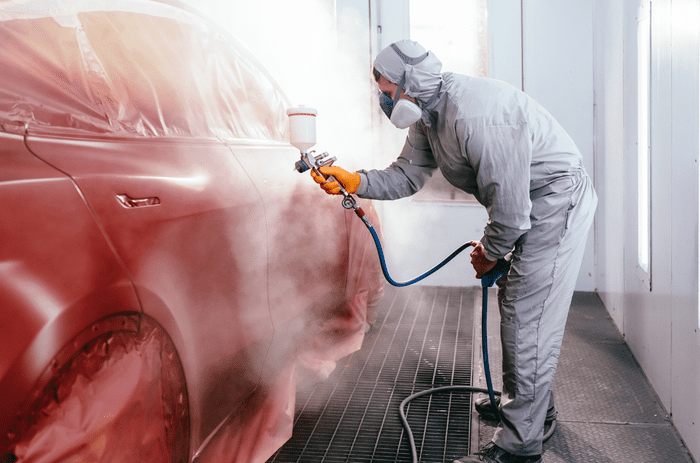From how you clean your car to your driving style and even maintenance, there’s several ways in which you can make your car more environment friendly.
The automotive industry bears the brunt for being a major contributor of global CO2 emissions that’s leading to visible climate change. Switching to EVs is a right step in the direction to reverse climate change, but that’s not necessarily the only solution. In fact, there’s still debate around how eco-friendly EVs actually are, since their production concerning use of the rare earth materials are quite resource intensive, but that’s a discussion for another day.
Fact is you can do a lot more with your car, EV or not, to make it more environmentally friendly. So, on this occasion of the United Nations’ World Environment Day, here are ten ways in which you can lower the environmental impact of your vehicle and its usage, beyond just tailpipe emissions.
1. Fuel efficient driving habits
 Efficient throttle modulation can help improve fuel economy.
Efficient throttle modulation can help improve fuel economy.
A hefty fuel bill is something that everyone detests. A fuel-efficient driving style, therefore, is not only better for your pocket, but for the environment, too. A few driving tips to save more fuel would be being consistent with your throttle inputs – hard acceleration and heavy braking often consumes a lot more fuel than driving at a steady pace, more so in vehicles with turbo-petrol engines. Switching off the vehicle if you’re stationary at a traffic signal for too long and maintaining the correct tyre pressure are few more ways to conserve fuel. Its ultimately fossil fuels that are seen as the biggest enemy to the environment, so its best to use it as little as possible.
2. Get your PUC done regularly
 PUC checks can help with early identification of potentail issues with the engine. (Image:Spinny)
PUC checks can help with early identification of potentail issues with the engine. (Image:Spinny)
There’s no better way to ensure your vehicle is fit for the environment than getting a certificate for the same. Regular PUC checks help ensure your vehicle is meeting the emission standards, contributing to cleaner air and a healthier environment. PUC tests can also help identify potential issues with a vehicle’s engine or exhaust system, allowing for timely repairs and preventing further problems. Besides, this is a legal requirement and also necessary for insurance renewals.
3. Reduce chemical-based car care products
 Use car care products with trusted ecolabels.
Use car care products with trusted ecolabels.
Car care products such as waxes, polishes and rim cleaners often contain hazardous solvents, alcohol and wetting agents. These eventually run off into the drainage system and seep into the ground and even into ground water sources, thus harming the environment. It is, therefore, important to read the labels on such products and avoid them if they contain harmful substances. Instead, choose products with trusted ecolabels or that are fully biodegradable. These may not be available at your local store, but can be bought online easily. Additionally, encourage your professional service stations/car washers to also use eco-friendly and chemical-free products.
4. Segregate and treat hazardous waste
 Segragation of hazradous waste is important for proper disposal.
Segragation of hazradous waste is important for proper disposal.
Regular disposables from your car, such as used batteries, used engine and transmission fluids, and old tyres, are hazardous for the environment if not disposed properly. Used batteries containing lead and acid often end up at local landfills, and the corrosive substances can seep into the soil and pollute it; used car fluids end up running off into waterbodies and into the soil through the drainage system without treatment. It is, therefore, important to segregate such hazardous waste for treatment and safe disposal. Segregation also helps in recycling of components such as used tyres and select plastics. Additionally, take your vehicle to garages that treat waste water, in order to separate oils and sediments, before they discharge it into the sewage system.
5. Use a bucket to wash your car
 Pressurised washers use way more water than is necessary for a regular wash
Pressurised washers use way more water than is necessary for a regular wash
As convenient as it may be to wash your car with a pressurised hose pipe, it is usually a very wasteful method. Pressurised washers use a lot more water than is usually required, and water is, of course, an invaluable resource. So, unless your car is enveloped in grime, you can resort to using a bucket and a used rag for your regular TLC. If you are opting for commercial car washes, consider the ones offering waterless options. Moreover, people washing cars in streams and rivers is a very common sight in our country, but such practices should be avoided as it pollutes the water with oil, which ultimately affects all life-forms downstream.
6. Shed extra weight
 A lighter car sips less fuel, saving both money and environment
A lighter car sips less fuel, saving both money and environment
Weight-saving measures are often associated with improving a car’s performance, but it can also go a long way in improving your vehicle’s fuel-efficiency, or in the case of an EV, its range. Consider not carrying unnecessary luggage on road trips and when pottering around town, and make sure you’ve emptied your trunk of all things that you don’t need. Other weight-saving measures can include not donning your car with unnecessary accessories such as roof racks and aftermarket interior upholstery, and extra heavy floor mats. All this adds to the car’s overall weight, which will have a measurable impact on your efficiency over an extended period.
7. Timely and proper servicing
.png?w=700&c=0) A well-maintained car is always more efficient and cleaner for the environment
A well-maintained car is always more efficient and cleaner for the environment
Ensuring that your vehicle is serviced at regular intervals, and by authorised technicians, is almost a given to maintain the basic hygiene of your vehicle, but routine servicing also helps check emissions, as your car will be in its optimal state of efficiency. Additionally, changing engine oil and air and fuel filters leads to smoother operation of the components, leading to their extended lifespan and reduced fuel use. One must also ensure that all wheels are aligned properly and are running at recommended pressures to maximise efficiency.
8. Avoid blinging out your car
 The process of chrome-plating car parts is very toxic for the environment.
The process of chrome-plating car parts is very toxic for the environment.
Its no secret that we absolutely love chrome on our cars, but the production of most chrome-plated trimmings, and their byproducts, are very harmful for the environment. It involves the use of toxic acid baths and heavy metals such as lead, which can leak into natural environments; in addition, chrome contains hexavalent chromium, which is a known carcinogen. The plating process is also known to contribute to airborne emissions. Apart from just blinging out your car, chrome does not add any functional benefits, so you might as well save some money there.
9. Aftermarket paint application
 Avoid open paint booths when repainting your car at a local garage.
Avoid open paint booths when repainting your car at a local garage. It’s very commonly seen that people resort to local garages or detailers to fix minor scratches or scuff marks instead of getting it done at an authorised service station because it’s significantly cheaper. While it’s absolutely fine to avail such local services, do ensure that the painting process is conducted in a concealed paint booth that captures all the particulate matter and toxic gases, and filters the air completely before releasing it into the environment. Furthermore, such garages must have a proper drainage to ensure toxic chemical compounds used in paints do not run off into waterbodies or the soil.
10. Scrapping old vehicles
 Scrapping old vehicles takes off outdated technology from the road.
Scrapping old vehicles takes off outdated technology from the road.
Taking off old vehicles from the road is a very good way to reduce the burden of outdated and potentially more polluting vehicles. Indian car buyers often retain their vehicles for a very long period, but such ICE-powered vehicles are often not as efficient as new ones, apart from also not meeting modern emission standards. This is the same reason why the government incentivises the scrapping of old vehicles, which also ensures that the metal and plastic parts from the scrapped vehicles are recycled as per procedures. And then, when buying a new vehicle, one can always opt for more fuel-efficient powertrains such as hybrids and CNG.
Also see:
Tech Talk: Recycling rare earth elements in electric vehicle motors

